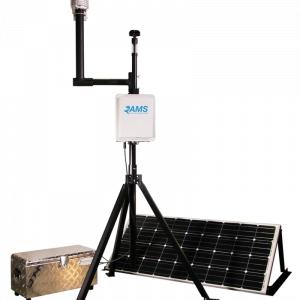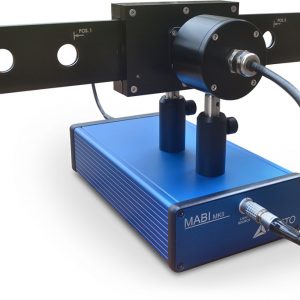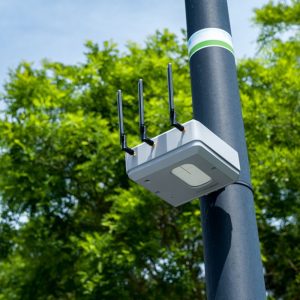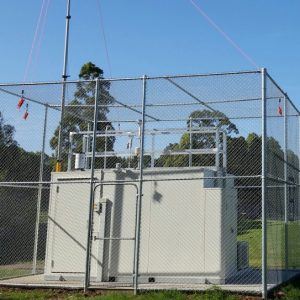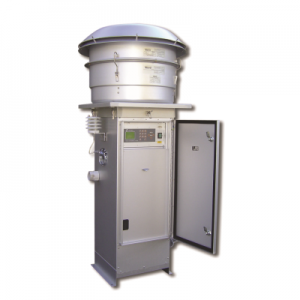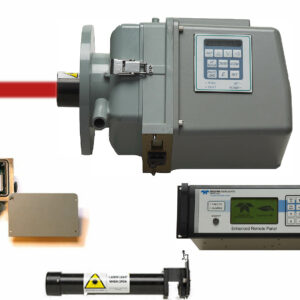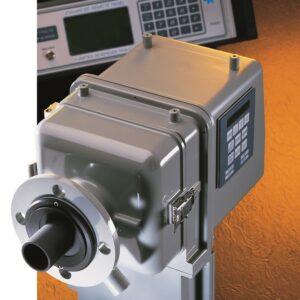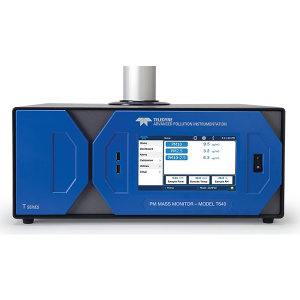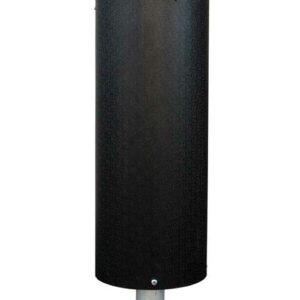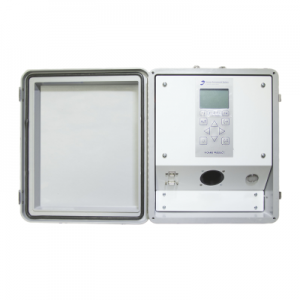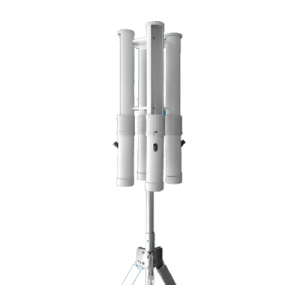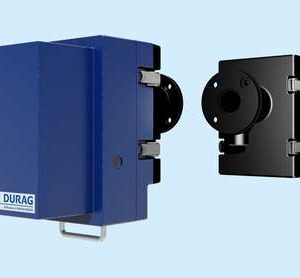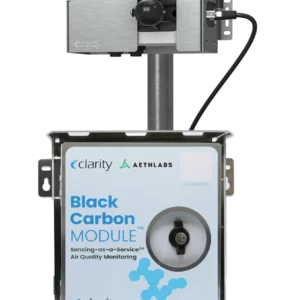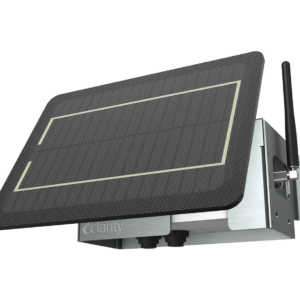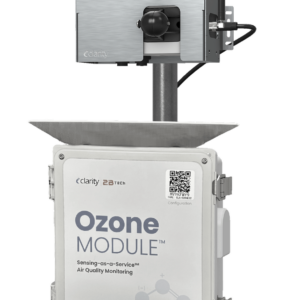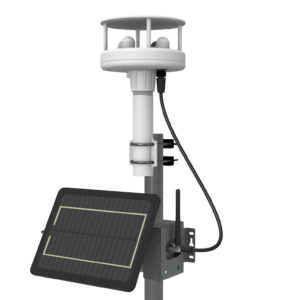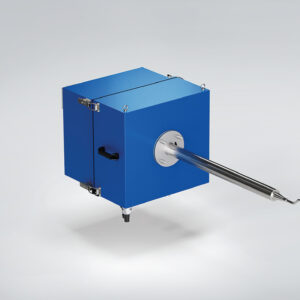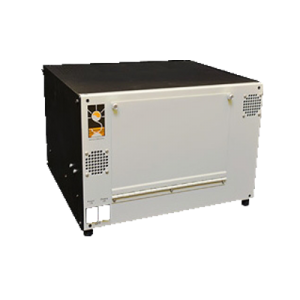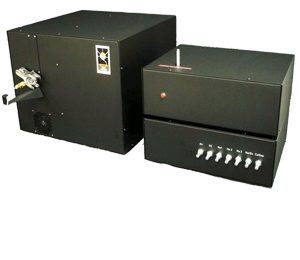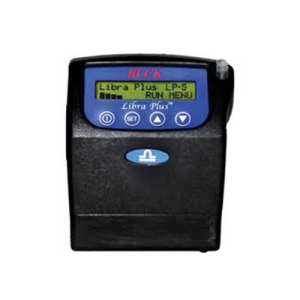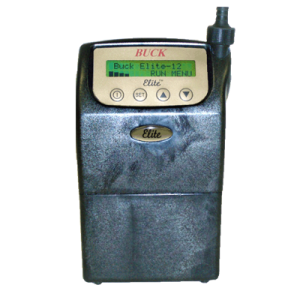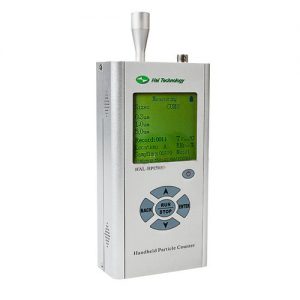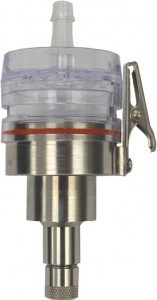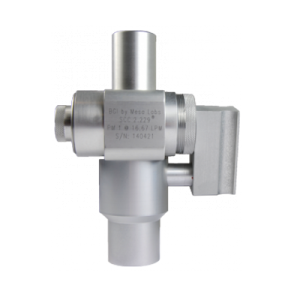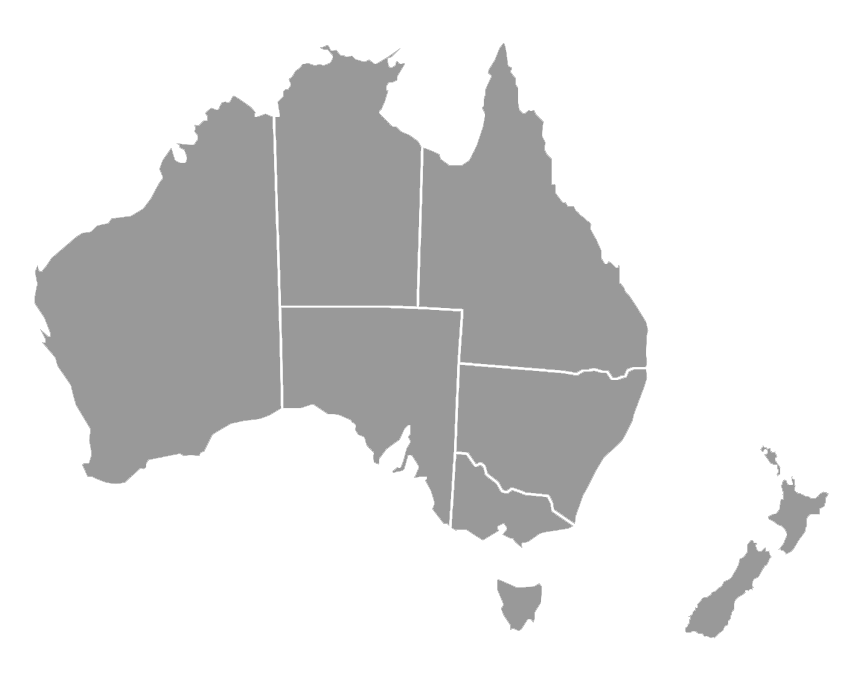BROWSE PRODUCTS
WE ARE THE ENVIRONMENTAL MONITORING EQUIPMENT EXPERTS, MANUFACTURING AND SUPPLYING AND MAINTAINING THE WORLD'S LEADING MONITORING EQUIPMENT
-
Dust & Particulate Monitors
QAMS Dust Master Pro 7000 by TES
The Dust Master Pro 7000 Series is a real-time, five channel particle-counter for simultaneously monitoring Total PM, PM10, PM4, PM2.5 and P -
Dust & Particulate Monitors
Multi-Wavelength Absorption Black carbon Instrument – MABI
The Multi-wavelength Absorption Black carbon Instrument (MABI) can determine both precisely and accurately the concentration and source of b -
Data Loggers & Software
TES SMALL FORM AIR QUALITY MONITORING SYSTEMS (AQMS)
Your Solution for Ambient Air Quality Monitoring Ideal for monitoring air quality outside or in workshops, ECOMSMART measures key parameter -
Calibration Equipment
TES AIR QUALITY MONITORING SYSTEMS (AQMS)
Thomson Environmental Systems (TES) is a specialist supplier of air quality monitoring systems and have installed and commissioned AQMS Stat -
Dust & Particulate Monitors
QAMS High Volume Master Pro by TES
Introducing the High Volume Master Pro from the QAMS by TES range of dust and meteorological monitoring equipment. The High Volume Master Pr -
Dust & Particulate Monitors
LaserHawk 360 Particulate Monitor
The heart of the Laserhawk® Dust Monitor is an electronically modulated (2400Hz), intensity controlled solid-state red laser located in the -
Dust & Particulate Monitors
Lighthawk Model 560 Opacity/Dust Monitor
TML's LightHawk® Opacity/Dust Monitor offers advanced technology for outstanding performance and reliability as an opacity, optical density -
Dust & Particulate Monitors
TELEDYNE API T640 PM2.5 Particle Monitor – US EPA Approved
Teledyne API’s Model T640 PM Mass Monitor delivers fast, accurate, simultaneous, continuous PM10 and PM2.5, real-time PM mass measurements -
Dust & Particulate Monitors
TES Dust Deposition Gauge (DDG’s)
TES manufactures a number of high quality, standard and directional dust deposition gauges for organisations seeking compliance to AS3580 Au -
Dust & Particulate Monitors
QAMS Filter Master Pro 5000 by TES
Introducing the Filter Master Pro 5000 from the QAMS by TES range of dust and meteorological monitoring equipment. The FMP5000 is a Low Volu -
Dust & Particulate Monitors
TES Directional Dust Deposition Gauge (DDDG’s)
TES manufacturers a number of high quality, standard and directional dust deposition gauges for organizations seeking compliance monitoring -
Dust & Particulate Monitors
Durag D-R 290 Optical opacity-dust monitor
The DURAG D-R 290 has been used successfully for more than 15 years in various applications as reliable and low maintenance opacity / dust m -
Dust & Particulate Monitors
Clarity Black Carbon Module
Clarity Black Carbon Module is based on the microAeth® Black Carbon measurement technology from AethLabs, and integrates seamlessly into Cl -
Dust & Particulate Monitors
Clarity Node-S
Clarity’s flagship particulate matter (PM) and nitrogen dioxide (NO₂) monitor is self-powered, FCC/CE/MCERTS certified, UV-resistant, an -
Dust & Particulate Monitors
Clarity Ozone Module
The Clarity Ozone Module is based on best-in-class technology from 2B Technologies, and provides accurate measurements of ozone in air over -
Dust & Particulate Monitors
Clarity Wind Module
The Clarity Wind Module measures the 2-dimensional horizontal components of wind speed and direction, providing you better insight into wher -
Dust & Particulate Monitors
Durag D-R 909 Extractive Dust Monitor
The D-R 909 provides extractive continuous dust measurement of small to medium dust concentrations in wet flue and process gases even under -
Dust & Particulate Monitors
SUNSET LABS Model-4 Semi-Continuous OC/EC Field Analyser
The Model-4 Semi-Continuous OC-EC Field Analyser features the latest advances in electronic and optical technology, and is rack mountable! -
Dust & Particulate Monitors
SUNSET LABS OC/EC Aerosol Analyser
The Lab OC-EC Aerosol Analyser is the industry standard for environmental and workplace monitoring. This instrument uses a proven thermal-op -
Dust & Particulate Monitors
AP Buck Personal Sampling Pump: Libra Plus
Personal Air Sampler that consists of a pump in a high impact case and single diaphragm pump mechanism. Buck Libra Plus LP1 Flow Ran -
Dust & Particulate Monitors
AP Buck Personal Air Sampling Pump: Elite Series
Programmable Personal Air Sampling Pump Draw air contaminants through a sampling media (i.e. 25mm or 37mm filter cassettes, bubble impinger -
Dust & Particulate Monitors
HAL Technology Handheld Particle Counter
Hal Technology has a range of handheld particle counters used to determine the air quality by counting & sizing the number of particles -
Dust & Particulate Monitors
MesaLabs BGI Cyclones – Personal
SCC 0.0695 Particle Cut Size PM0.8 at 2.21 LPM Stainless Steel Shrouded Inlet Design 37mm filter size Ideal for Diesel soot sampling -
Dust & Particulate Monitors
MesaLabs BGI Cyclones- Environmental
PM2.5 Very Sharp Cut Cyclone- VSCC Cut Pm2.5 at 16.67 LPM US EPA Approved PM2.5 Separator US EPA Federal Reference Method designated P
Dust Monitoring Devices for Top Air Quality
Whether outside or indoors, accurate dust monitoring requires cutting-edge equipment with exacting, specific requirements. TES enables you access to foremost, leading dust monitoring instruments, supplying organisations all throughout Australia with several convenient locations in NSW, ACT, QLD, WA and VIC.
Whether ambient, CEMS, process, or indoor applications, accurate dust monitoring requires cutting edge-equipment. With a wide range of instruments and solutions suitable for any requirement, TES provides you with access to foremost, leading dust monitoring instruments, supplying organisations through Australia (and the world), with several convenient locations in NSW, ACT, QLD, WA and VIC. For more information, check out our list of Dust Monitoring FAQ’s at the bottom of this page!
Industries we serve with Dust Monitoring:
Mining and Quarries, Civil and Construction, Government and Authorities, Consultants and Engineering, Logistics, Ports and Terminals, Industry and Manufacturing, Power and Energy, Research and Development.
Dust Monitoring FAQs
Choosing the best dust monitor for the job can be confusing. Do you require powerful equipment with remote operation features? Perhaps you only need small, handheld particulate monitors?
The answers to the following popular dust monitoring FAQs can serve as a helpful guide to understanding what best suits your situation. Our local and knowledgeable representatives are also available to answer your questions and help you select the right dust monitoring equipment for your needs. Reach out to our team to learn about our vast range of products and services.
What is dust monitoring?
Dust monitoring is the practice of analysing air quality to determine the level of airborne pollutants that are present. Commonly referred to as dust, these pollutants are defined as tiny, suspended particulate matter. Such pollutants may include mites, soot, soil, smoke, pollen, hairs, fibres and skin cells among others.
When inhaled, these airborne pollutants can impact health. For people with respiratory issues like asthma and hay fever, the effects can be even more severe and disrupt the proper operation of machinery and electronics.
By monitoring dust levels, you’re alerted when levels exceed certain set parameters. This allows you to take action and minimise potential problems affecting the health of those in the environment in addition to equipment efficiency.
How do you monitor dust levels?
Specially-designed equipment is available for detection and measurement of the amount of dust in the air. The most common and versatile type of dust monitors use optical technology, whereby particles are passed through a laser beam and the concentration of dust is measured by how much light scatters as the particles move through the beam. This family of dust monitors are generally more versatile robust, and the easiest to maintain. There is also now an Australian Standard for this method.
Another measuring option is the Tapered Element Oscillating Microbalance (TEOM) monitor. These work by passing the sample onto something akin to a small tuning fork, and the concentration of dust is measured by how much the frequency changes.
Beta attenuation monitoring (BAM) is the other common family of dust monitoring instrumentation. These work by passing the sample through a beta radiation flow, and the concentration of dust is calculated by measuring how much of the radiation makes it through to the filter tape at the end of the flow path.
How can you tell if there is dust in the air?
Large dust particles are visible to the naked eye. You can also see dust more clearly with the use of light. Try shining a flashlight over a section of your carpet or furniture after rubbing or pounding the area, and you’re likely to see small flecks floating in the light.
Not all dust is so easily visible. Dust detection of the tiniest particles is only possible with the use of special dust sensor equipment. Regardless of whether you see it or not, you can be sure that some form of dust is in the air you’re breathing.
Dust is actually present in even the most carefully monitored of environments. Those spaces are called clean rooms, and they’re constantly monitored and carefully filtered to maintain an extremely low level of airborne particulates. Dust monitoring instruments play a pivotal role in maintaining these environments.
How is air particulate matter measured?
Air particulate is a more accurate term for dust and the monitoring equipment discussed here is actually measuring air particulate matter. Particulate monitors analyse and measure the size and density of particulates, as well as the concentration of these pollutants in the air.
Some air particulates are large enough for the human body to actually prevent from entering your lungs. The cilia — tiny hairs in your nose and respiratory tract — filter the air you breathe, capturing dust particles and preventing them from entering the body. These particles are generally larger than 10 micrometers.
Particles smaller than 10 micrometers, also referred to as “PM10”, are able to enter the body via the nose and make their way into the lungs, potentially causing serious health issues. PM10 instruments measure air particulate matter up to 10 micrometres in size. PM2.5 instruments can measure air particulates up to to 2.5 micrometres (PM2.5). Some instruments, such as certain optical dust monitors, are able to measure multiple fractions simultaneously.
Air particulates between 2.5 and 10 micrometres are referred to as coarse, while particulates measuring between 1 and 2.5 micrometres are considered fine. Smaller particulate matter is defined as being ultrafine. The smaller the particulate, the longer it can remain suspended in the air and, longer exposure presents greater risks.
How can I measure air quality?
Measuring air quality means measuring the size and amount of particulate matter present in your air supply. The Air Quality Index sets a positive number that represents how polluted the air is and the risk each level presents to your health. An AQI up to 66 represents no risk, while an AQI over 200 signifies emergency conditions.
Get Quality Dust Monitoring Equipment from Thomson
Use the information above and browse our range of dust and particulate monitoring equipment or speak to our team today to find the perfect instrument for your environment and requirements. Count on Thomson Environmental Systems for foremost quality equipment, meeting and exceeding your OHSA and other monitoring standards.
Dust Monitoring Devices for Top Air Quality
Whether outside or indoors, accurate dust monitoring requires cutting-edge equipment with exacting, specific requirements. TES enables you access to foremost, leading dust monitoring instruments, supplying organisations all throughout Australia with several convenient locations in NSW, ACT, QLD, WA and VIC.
Whether ambient, CEMS, process, or indoor applications, accurate dust monitoring requires cutting edge-equipment. With a wide range of instruments and solutions suitable for any requirement, TES provides you with access to foremost, leading dust monitoring instruments, supplying organisations through Australia (and the world), with several convenient locations in NSW, ACT, QLD, WA and VIC. For more information, check out our list of Dust Monitoring FAQ’s at the bottom of this page!
Industries we serve with Dust Monitoring:
Mining and Quarries, Civil and Construction, Government and Authorities, Consultants and Engineering, Logistics, Ports and Terminals, Industry and Manufacturing, Power and Energy, Research and Development.
Dust Monitoring FAQs
Choosing the best dust monitor for the job can be confusing. Do you require powerful equipment with remote operation features? Perhaps you only need small, handheld particulate monitors?
The answers to the following popular dust monitoring FAQs can serve as a helpful guide to understanding what best suits your situation. Our local and knowledgeable representatives are also available to answer your questions and help you select the right dust monitoring equipment for your needs. Reach out to our team to learn about our vast range of products and services.
What is dust monitoring?
Dust monitoring is the practice of analysing air quality to determine the level of airborne pollutants that are present. Commonly referred to as dust, these pollutants are defined as tiny, suspended particulate matter. Such pollutants may include mites, soot, soil, smoke, pollen, hairs, fibres and skin cells among others.
When inhaled, these airborne pollutants can impact health. For people with respiratory issues like asthma and hay fever, the effects can be even more severe and disrupt the proper operation of machinery and electronics.
By monitoring dust levels, you’re alerted when levels exceed certain set parameters. This allows you to take action and minimise potential problems affecting the health of those in the environment in addition to equipment efficiency.
How do you monitor dust levels?
Specially-designed equipment is available for detection and measurement of the amount of dust in the air. The most common and versatile type of dust monitors use optical technology, whereby particles are passed through a laser beam and the concentration of dust is measured by how much light scatters as the particles move through the beam. This family of dust monitors are generally more versatile robust, and the easiest to maintain. There is also now an Australian Standard for this method.
Another measuring option is the Tapered Element Oscillating Microbalance (TEOM) monitor. These work by passing the sample onto something akin to a small tuning fork, and the concentration of dust is measured by how much the frequency changes.
Beta attenuation monitoring (BAM) is the other common family of dust monitoring instrumentation. These work by passing the sample through a beta radiation flow, and the concentration of dust is calculated by measuring how much of the radiation makes it through to the filter tape at the end of the flow path.
How can you tell if there is dust in the air?
Large dust particles are visible to the naked eye. You can also see dust more clearly with the use of light. Try shining a flashlight over a section of your carpet or furniture after rubbing or pounding the area, and you’re likely to see small flecks floating in the light.
Not all dust is so easily visible. Dust detection of the tiniest particles is only possible with the use of special dust sensor equipment. Regardless of whether you see it or not, you can be sure that some form of dust is in the air you’re breathing.
Dust is actually present in even the most carefully monitored of environments. Those spaces are called clean rooms, and they’re constantly monitored and carefully filtered to maintain an extremely low level of airborne particulates. Dust monitoring instruments play a pivotal role in maintaining these environments.
How is air particulate matter measured?
Air particulate is a more accurate term for dust and the monitoring equipment discussed here is actually measuring air particulate matter. Particulate monitors analyse and measure the size and density of particulates, as well as the concentration of these pollutants in the air.
Some air particulates are large enough for the human body to actually prevent from entering your lungs. The cilia — tiny hairs in your nose and respiratory tract — filter the air you breathe, capturing dust particles and preventing them from entering the body. These particles are generally larger than 10 micrometers.
Particles smaller than 10 micrometers, also referred to as “PM10”, are able to enter the body via the nose and make their way into the lungs, potentially causing serious health issues. PM10 instruments measure air particulate matter up to 10 micrometres in size. PM2.5 instruments can measure air particulates up to to 2.5 micrometres (PM2.5). Some instruments, such as certain optical dust monitors, are able to measure multiple fractions simultaneously.
Air particulates between 2.5 and 10 micrometres are referred to as coarse, while particulates measuring between 1 and 2.5 micrometres are considered fine. Smaller particulate matter is defined as being ultrafine. The smaller the particulate, the longer it can remain suspended in the air and, longer exposure presents greater risks.
How can I measure air quality?
Measuring air quality means measuring the size and amount of particulate matter present in your air supply. The Air Quality Index sets a positive number that represents how polluted the air is and the risk each level presents to your health. An AQI up to 66 represents no risk, while an AQI over 200 signifies emergency conditions.
Get Quality Dust Monitoring Equipment from Thomson
Use the information above and browse our range of dust and particulate monitoring equipment or speak to our team today to find the perfect instrument for your environment and requirements. Count on Thomson Environmental Systems for foremost quality equipment, meeting and exceeding your OHSA and other monitoring standards.
let's find your monitoring solution
If your equipment doesn’t do its job properly, you can’t do yours. Let’s find you a reliable, high quality solution to meet your requirements and make your life easier.
- BROWSE OUR PRODUCTS
Use our advanced search to filter above to browse our products by industry, application, parameter and brand.
- CONTACT YOUR LOCAL REP
With offices across Australia in NSW, QLD, ACT, VIC and WA we have a local office nearby waiting to help. For our customers in Africa we have an office in Ghana. If you’re in New Zealand or elsewhere overseas, we have dedicated team member ready to help with whatever you need.
- FIND YOUR SOLUTION
Whether you have a license requirement, specification needs or external considerations, our team of experts can guide you to the right solution.

